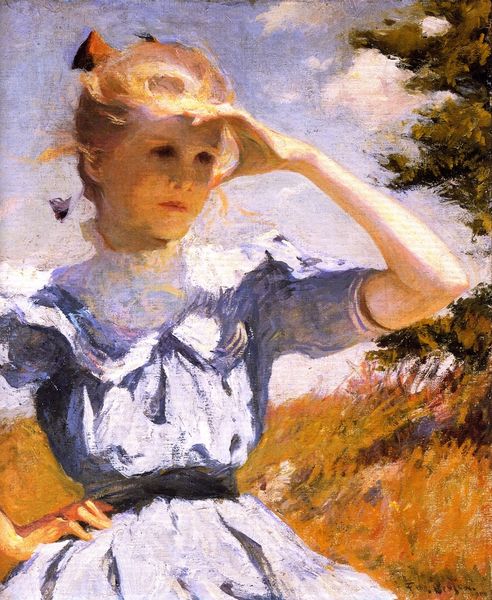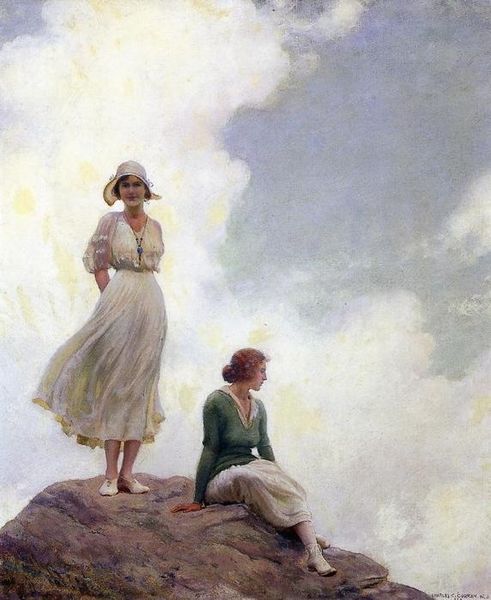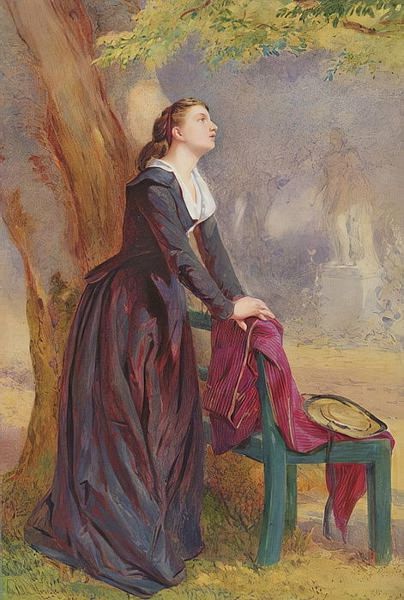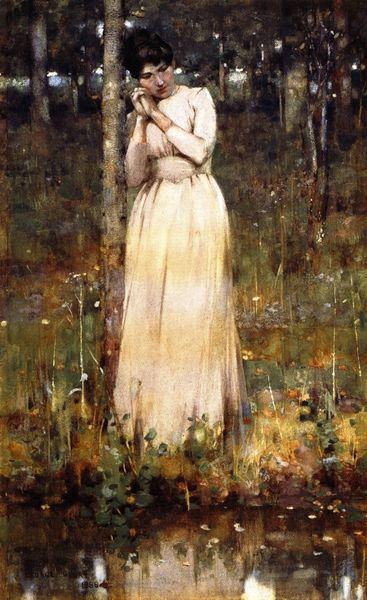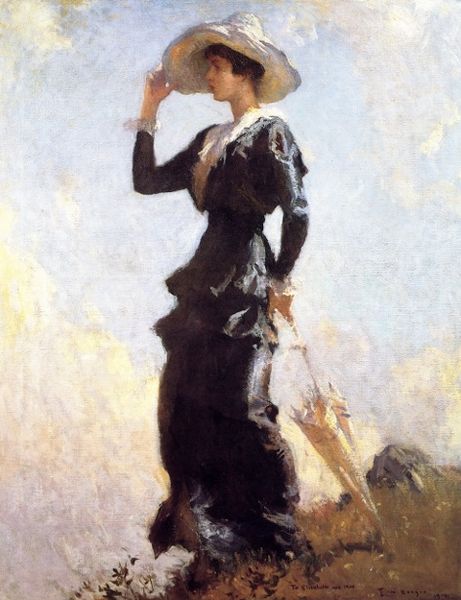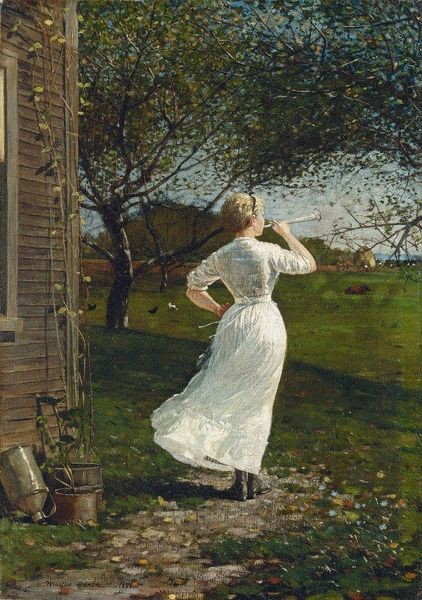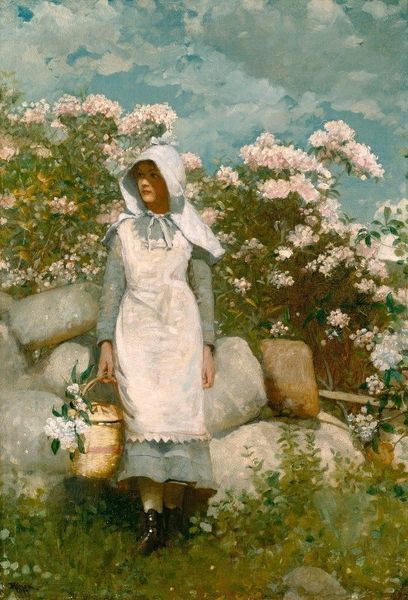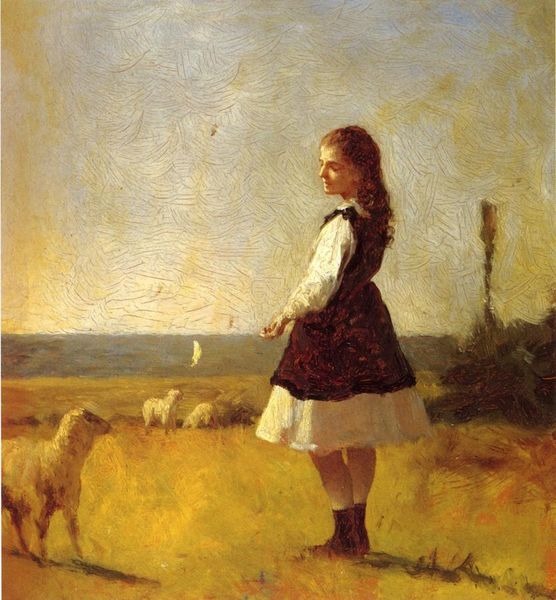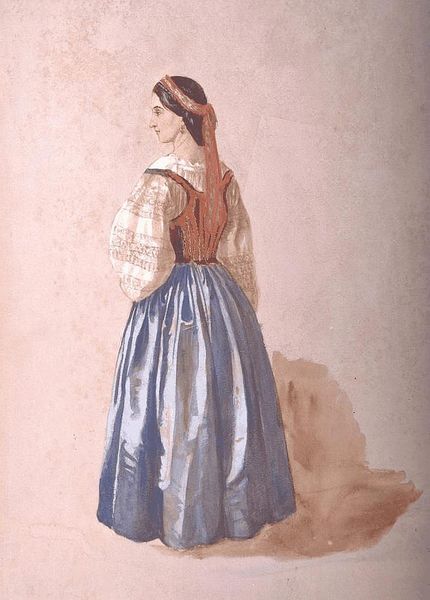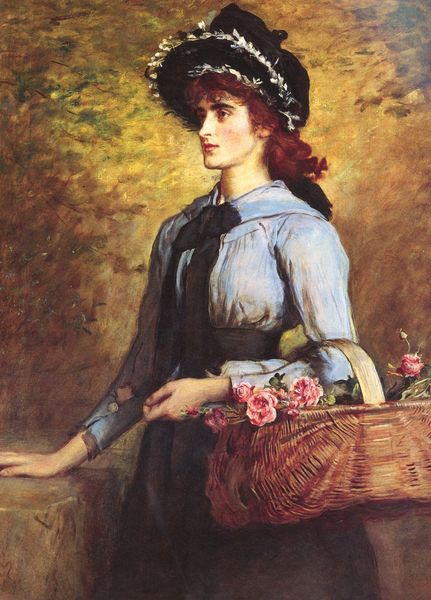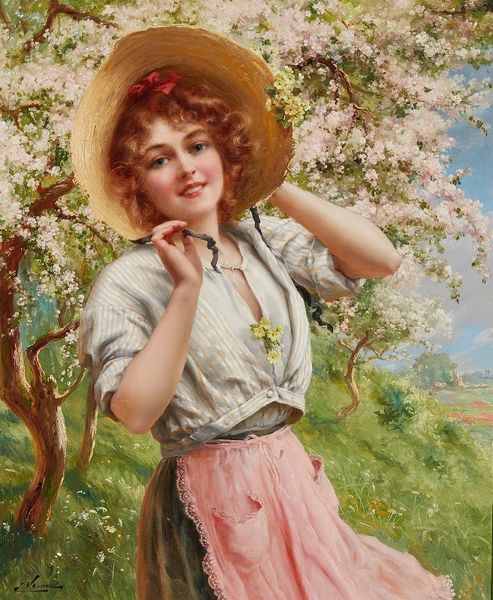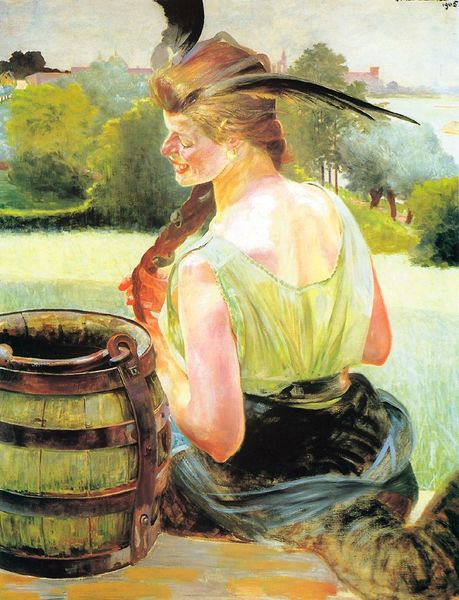
gouache, plein-air, watercolor
#
portrait
#
gouache
#
impressionism
#
gouache
#
plein-air
#
landscape
#
oil painting
#
watercolor
#
watercolour illustration
#
genre-painting
Dimensions: 35.7 x 51 cm
Copyright: Public domain
Curator: Winslow Homer's "Fresh Air," created around 1878, invites us to consider the shifting social landscape of leisure in post-Civil War America. It’s currently held at the Brooklyn Museum. Editor: My first impression is the airy, almost dreamlike quality. The girl's figure is sharply defined, yet she seems to blend into the pastel background and flowing fabric, as do the animals. Curator: Exactly. Homer’s masterful use of watercolor and gouache evokes a sense of fleeting moments, of leisure and the pastoral. This work is significant because it shows a turn towards scenes of rural, middle-class life. Editor: I'm especially drawn to how he handles the materiality of her dress. There’s a looseness, a transparency almost, which speaks to the changing industrial processes creating these textiles – perhaps something readily available, newly mass-produced cotton. Curator: Precisely. This is where Homer is really tuned into his contemporary society. The rise of a middle class, the movement toward leisure as a commodity. Fresh Air presents a romanticised, yet undeniably classed depiction of country life. Editor: And her placement! Standing apart from, yet within the scene – I keep thinking of the labor implied even in leisure, a certain performed “pastoral”. It’s more complex than just a simple, carefree moment. How much did the industry and textile production allow her this luxury? Curator: That’s astute. Fresh Air becomes a meditation on American identity, leisure, and the complex intersections of class, gender, and rural imagery during a critical time of social reconstruction. It reflects a yearning for simpler times, perhaps, but with the trappings of newfound industrial wealth. Editor: Looking closer at the details—the deliberate strokes, how the fabrics suggest rather than dictate form — there's such a sensitivity to the production of this experience, one can ask oneself, what did the materiality really cost, who truly had the luxury? Curator: Considering how Homer frames his subjects, and his attention to materials…it challenges any easy reading. "Fresh Air" certainly encapsulates how much history can be read even from a scene of quiet reflection. Editor: Right, the texture of paint and cloth creating not just a representation but an entire layered perspective on American life then. Makes you rethink how deeply interwoven making and seeing really are.
Comments
No comments
Be the first to comment and join the conversation on the ultimate creative platform.
